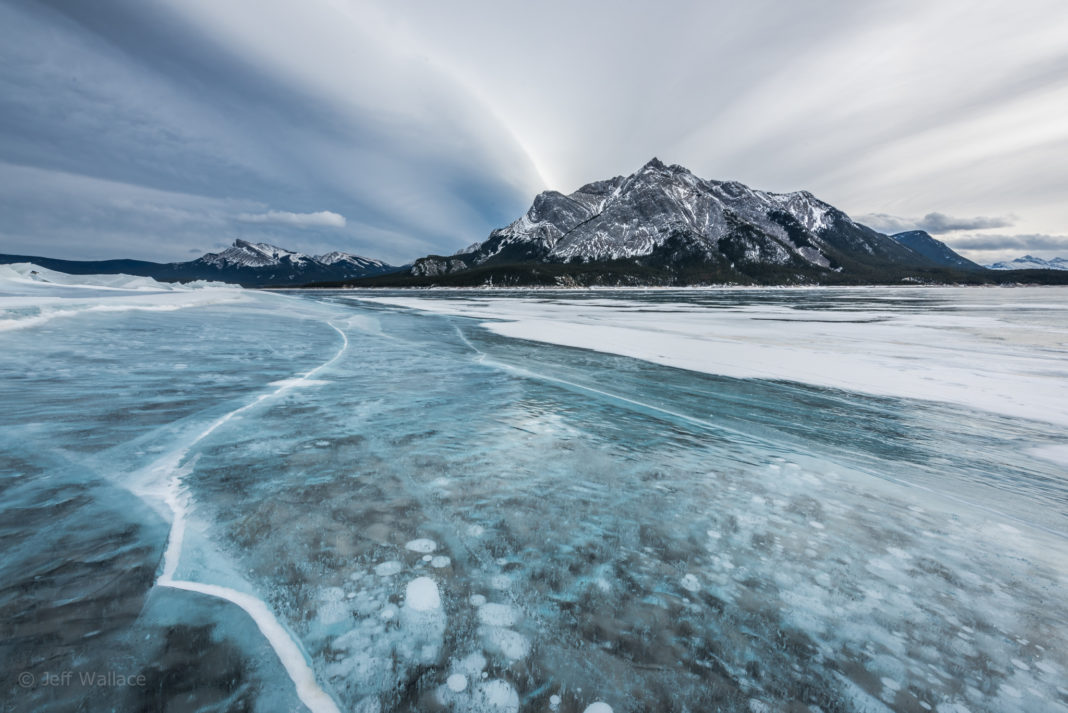Abraham Lake is a lake and Alberta’s largest reservoir. It is located in the “Kootenay Plains area of the Canadian Rockies’ front range”, on the North Saskatchewan River in western Alberta, Canada.
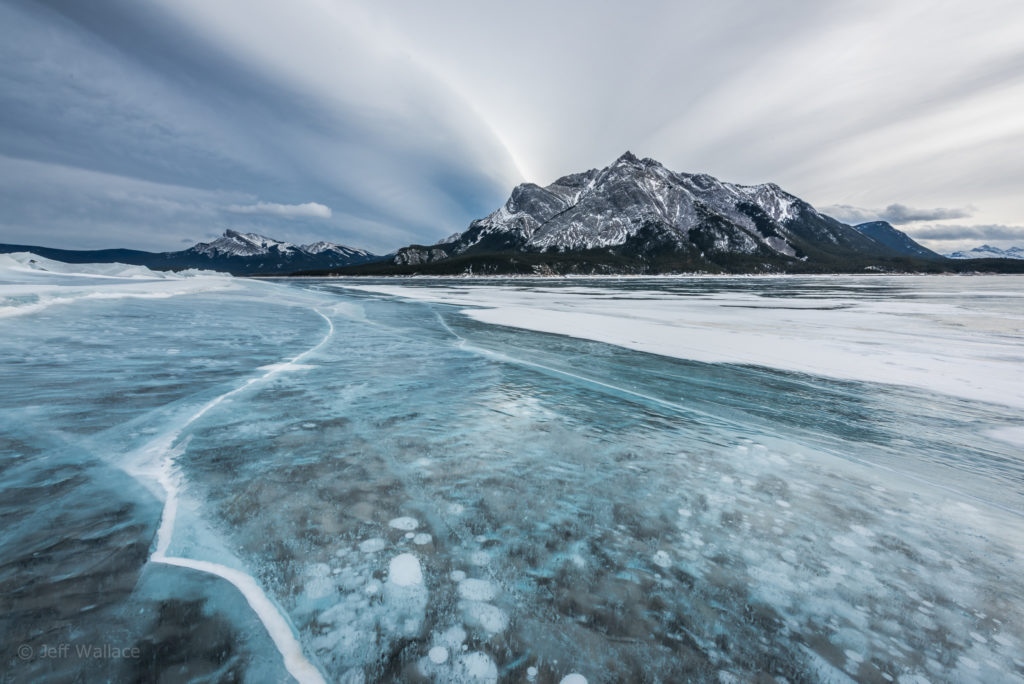
Abraham Lake has a surface area of 53.7 km2 and a length of 32 k). Although man-made, the lake has the blue color of other glacial lakes in the Rocky Mountains, which is caused by rock flour.
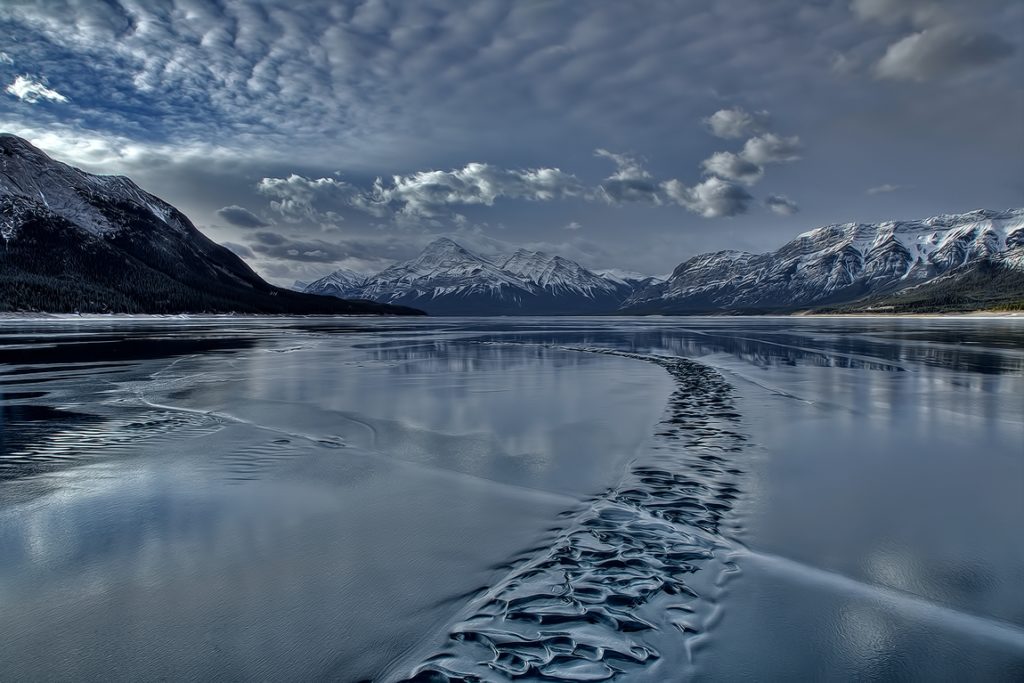
Abraham Lake was created by the former Calgary Power Company, now TransAlta, in 1972, with the construction of the Bighorn Dam. The lake was built on the upper course of the North Saskatchewan River, in the foothills of the Canadian Rockies, and lines David Thompson Highway between Saskatchewan River Crossing and Nordegg.
If tourists come here between December and January, they stand a very, very good chance of seeing tons of frozen ice bubbles. These frozen ice bubbles happen at many lakes in the Canadian Rockies, but they are most prominent at Abraham Lake.
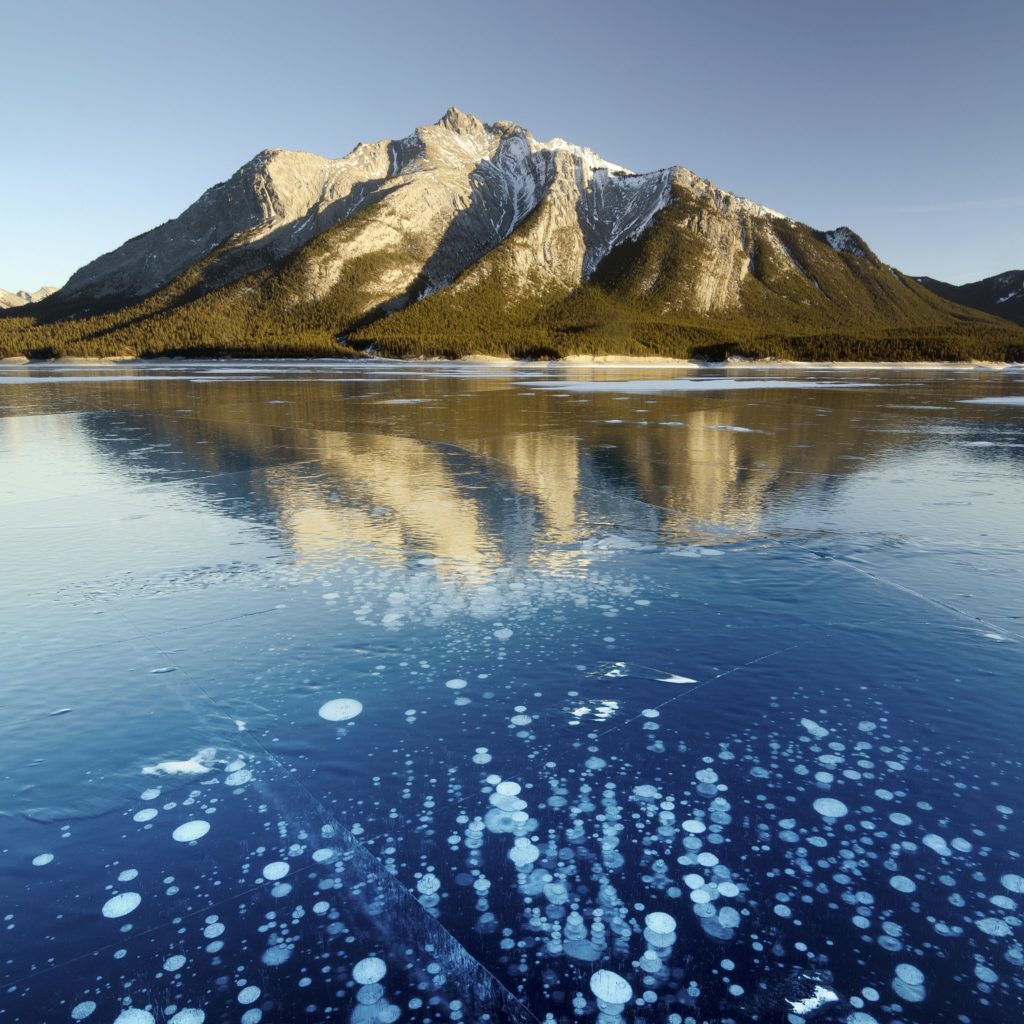
The Abraham Lake bubbles are thought to be derived from decomposing organic material submerged when the reservoir was filling. There could also be a component derived from natural gas (of which Alberta has plenty) seeping through the rocks underlying Abraham Lake. Irrespective of the source, you can see successive layers of methane ice bubbles trapped as the ice thickens.
As the lake begins to freeze, the bubbles get trapped and stack on top of each other. This creates unique formations of ice bubbles in the winter. When spring rolls around, and the ice melts, methane gas is released into the atmosphere.
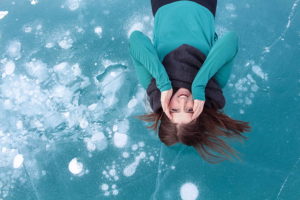
Many sections of this area are shallow which makes it fun for seeing grass in the ice. The shallowness also means it’s a slightly safer spot to skate, in case an accident or falls through the ice were to happen you wouldn’t be completely submerged.
According to Wikipedia/ thebanffblog





